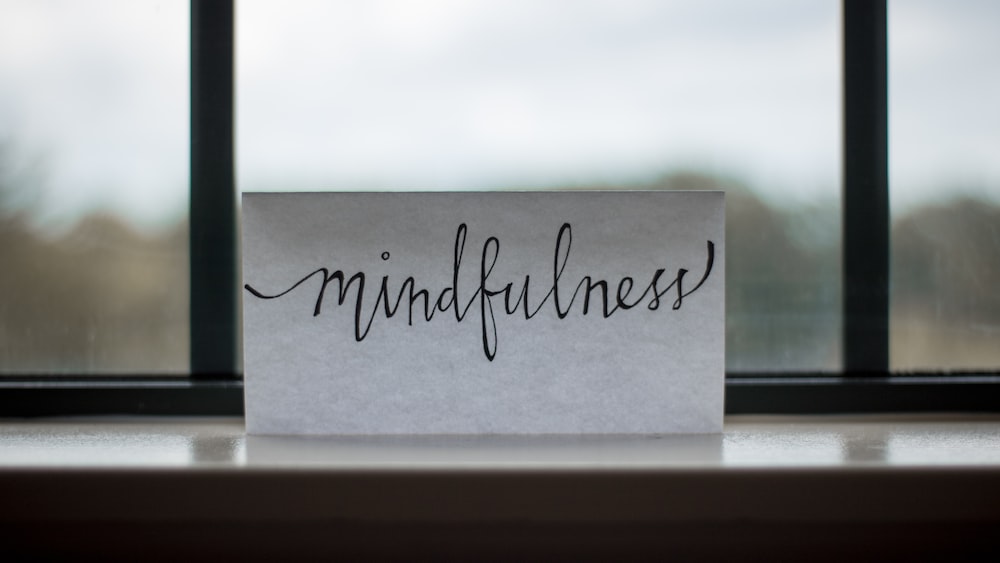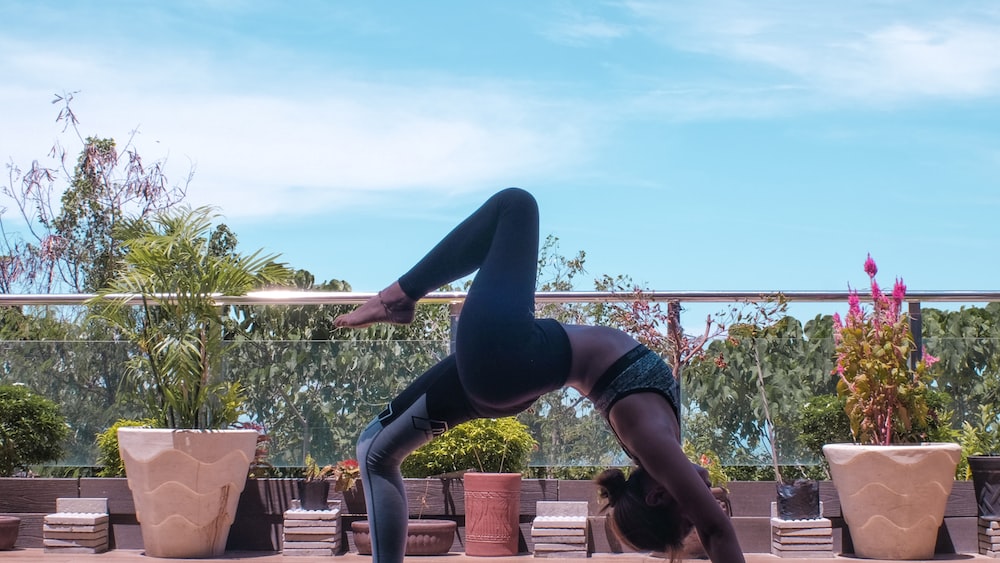How To Measure Mindfulness: The Ultimate Guide
Hello there, fellow spiritual adventurers! Have you ever wondered what it means to be mindful, or how one could perhaps quantify this wonderful state of being?
Isn’t it just like trying to gather cats into a basket, isn’t it? If the internet has taught us anything (aside from the fact that people will do anything for likes), it’s that corralling cats is a bit of a Herculean task. It’s much like trying to gauge mindfulness. This elusive, whisker-twitching creature, known as mindfulness, is known to help improve our lives significantly, yet it remains as mysterious and hard-to-pin-down as the dark side of the moon. Like cats’ social interactiveness, it’s not quite clear when it’s happening, but you sure as biscuits know when it’s not!
But, dear reader, fret not for like seasoned cat herders, we’re here to help you understand and measure the purr-plexing concept of mindfulness. This blog post is like that snazzy, catnip-filled toy that will attract all you curious kittens and give you the ultimate tour of this thing we call mindfulness. We’ll twitch our whiskers at all the nooks and crannies, from “What is mindfulness?” to different approaches and instruments for measuring mindfulness. We’ll also address the challenges in measuring mindfulness with a playful paw.
Whiskers twitching already, aren’t they? Well, let’s dive right in and head on this mouse hunt towards understanding and measuring mindfulness!
Understanding Mindfulness
Mindfulness. It’s a term that’s been tossed around so much that its sophistication and depth can sometimes get lost in the quagmire of modern jargon. But fear not, fellow spiritual adventurers, for we are about to embark on a quest to reclaim the majesty of this term. Let the journey commence!

What is Mindfulness?
Mindfulness, depicted as a cat lounging lazily on a sunlit windowsill, is essentially the practice of being fully aware and present in the moment. It’s like actively noticing the sun warming your fur, the cushiony softness underneath you, and the bird fluttering outside without the knee-jerk reaction of twitching your tail instantly.
It isn’t about quietening one’s mind-completely (believe us, we’d all love if the mice in our minds stopped running on their wheels forever) but rather, it’s about recognizing those thoughts and not allowing them to dominate. It’s like knowing a mouse is there but choosing to just bask in the sun instead.
Not to be mistaken with an aloof spectator, mindfulness also implies engagement with your experience mindfully, accepting situations without judging them or ourselves. No, it’s not about being a super productive Zen master every single second, it’s more about being an aware cat who knows where its paws are.
Mindfulness is the practice of being fully present in the moment, recognizing thoughts without allowing them to dominate, and engaging with experiences without judgment.
The Importance of Measuring Mindfulness
Don’t take our feline comparsions lightly; the importance of measuring mindfulness is akin to understanding the twitch of a cat’s tail. Much like reading feline body language can express the mood or intention of our furry friends, gauging our level of mindfulness can guide us towards areas that need improvement or attention in our lives.
From reducing stress and fostering clear emotional regulation to enhancing performance (and not just in hunting mice), mindfulness provides us with an ethical compass and an overall perspective that encapsulates a holistic form of wellbeing. Therefore, obtaining a suitable mindfulness measure is like finding the purr-fect spot in the sun – it can significantly brighten up your life!
Moreover, in the context of research, accurate measurement of mindfulness (BCT and PVT could be crucial techniques, for instance) yields valuable data that can contribute largely towards the development of therapeutic interventions, shaping them to efficiently cater to different individuals.
Approaches to Measuring Mindfulness
There’s more than one way to botch a mouse hunt – likewise, there are several roads one can take to quantify mindfulness. Let’s pad softly into the realm of different approaches to measuring mindfulness, shall we?
Mindfulness as a Trait or Disposition
Here’s a bit of food for thought – is mindfulness a trait or a disposition? Would you consider it more as a constantly purring motor under the hood of a sleek sports car or a nifty muffler you can switch on or off when needed?

Firstly, when we regard mindfulness as a trait or disposition, we’re viewing it as relatively stable characteristics. Essentially, we’re not speaking of the intense, in-the-moment feeling you get when you’re chasing a laser pointer, but more of the overall presence, the calm and content sunbathing you engage in, tail flicking gently in the breeze.
Broadly, trait or dispositional mindfulness refers to a natural tendency or propensity towards mindfulness. It’s like being the sort of cat who prefers watching birds from the window over chasing its tail.
Psychophysiological Approach to Measuring Mindfulness
Enter psychophysiological measures, the ‘catnip’ of mindfulness measurement. In simple terms, this approach delves into the physiological effects of psychological states – it’s like gauging a cat’s excitement levels through their dilated pupils or quicker heartbeat.
This method has its claws sunk deep into mindfulness measurement, considering the fact that mindfulness can have profound effects on our mind and body alike. For instance, reduced heart rates, changes in brain wave activity, and lower cortisol levels are associated with mindfulness. Much like a calmer cat has a slower purring, breathing rate.
Instruments for Measuring Mindfulness
Like having the right grooming tools for a particularly vain Persian or the perfect toy for an easily bored Siamese, it is crucial to have the right instruments for measuring mindfulness. Let’s explore what these might be.
Overview of Mindfulness Instruments
The realm of mindfulness measurement has a variety of techniques, as varied as the spots on a leopard’s back or stripes on a tiger. Each of these instruments is designed to capture the elusive mouse that is mindfulness, from psychometric measures to more interactive tasks.
These instruments can be as diverse as the Five-Facet Mindfulness Questionnaire (FFMQ), the Freiburg Mindfulness Inventory (FMI), and the Breath Counting Task (BCT). Some of these tools, much like cat toys, are better suited for certain individuals or research contexts.
The Use and Utility of Mindfulness Scales
When it comes to measuring mindfulness, mindfulness scales are the cat’s whiskers. They allow for a structured and quantitative evaluation of mindfulness, like assessing the length of your favorite feline friend’s whiskers to determine their overall health.
Using a combination of self-report items, these scales assess mindfulness along different dimensions, shedding light on an individual’s ability to sustain attention, become aware of the subtleties in one’s environment, and act with full awareness. It’s much akin to an observant cat registering the smallest rustle in the grass or bird fluttering in a tree – aware, present, and prepared.
Mindfulness scales, such as the Private Victories Test (PVT), are widely used in both clinical and research settings. Their utility lies not just in providing a gauge of mindfulness, but also in shaping therapeutic interventions, assessing progression, and tailoring strategies for individual cats – er, people! These tools, like an adept paw hunting in the dark, provide precise measures, placing mindfulness in a quantifiable, describable box.

Top Mindfulness Questionnaires
Following a trail of pixie dust into the realm of mindfulness, there’s an array of colorful questionnaires that wait to tango with the conscientious mind. Much like choosing between a delightful mojito and a sassy margarita on a hot summer day, it can be difficult to make a choice. So let’s introduce you to the star studded cast, and make the choice slightly less dizzying!
Five-Facet Mindfulness Questionnaire (FFMQ)
Imagine the five facets of this instrument as a modern pentathlon of mindfulness. Not all of us can juggle five balls at once (heck, many of us can’t even juggle one), but FFMQ, developed by Ruth A. Baer, gracefully challenges this. The five facets are observing, describing, acting with awareness, non-judging of inner experience, and non-reactivity to inner experience.
The questionnaire is like an intensive yoga session for your mental agility. It requires the respondent to rate their daily experiences in relation to the five facets. This isn’t a ‘one-size-fits-all’ approach, so the questionnaire also allows for individual variations – making it a truly tailored experience.
So, if you’re thinking this all sounds like a stroll through a mindfulness theme park, you’re not far off. Peter Malinowski used this questionnaire for a study in 2008, indicating its widespread research usage.
Freiburg Mindfulness Inventory (FMI)
Next up is the incredibly dashing Freiburg Mindfulness Inventory, or as it’s called in elite mindfulness circles, the FMI. Unlike its five-faceted cousin, FMI mainly focuses on maintaining presence and acceptance. It’s an exercise in simplicity and imbuing your everyday experiences with a touch of mindfulness.
Originally designed for individuals who meditate, it has since branched out to suit a wider population, much like how the little café down the street soon turned into an international coffee chain. It aims to detect the subtle changes in a person’s mindfulness level that may go unnoticed in other questionnaires.
To metaphorically capture its essence, let’s say it’s like a palate cleanser between rich and heavy gourmet courses. It helps you to taste, over and over again, the unique flavours of your lived experiences – each moment a delight in its own right.
Cognitive and Affective Mindfulness Scale – Revised (CAMS-R)
Fasten your seatbelts for this incredibly punk-rock approach to mindfulness evaluation – Cognitive and Affective Mindfulness Scale – Revised (CAMS-R) for short. Picture it like a mindfulness road trip, with pit stops for attention, present-focus, awareness, and acceptance.
This tool, lovingly concocted by David J. F. Hastings, aims to measure mindfulness regardless of a respondent’s meditation history. It’s like a universal translator for mindfulness. Sounds like a sci-fi dream, doesn’t it?
Indeed, CAMS-R might be the cool rebels of mindfulness questionnaires, but there’s something quite profound about their approach. By keeping it universal, it highlights mindfulness is not just for those who meditate or practice yoga, but for everyone!
The Cognitive and Affective Mindfulness Scale – Revised (CAMS-R) is a universal tool that measures mindfulness, emphasizing that it is not exclusive to those who meditate or practice yoga.
Philadelphia Mindfulness Scale (PHLMS)
The Philadelphia Mindfulness Scale (PHLMS) is a character that operates a little differently. This questionnaire treats mindfulness as a two-factor construct. Picture it like a mindful Waltz, the dance partners being awareness and acceptance.
PHLMS believes the key to true mindfulness is to move fluidly through life’s experiences, striking a ballerina’s balance between awareness and acceptance. It’s ambitious, it’s daring – it’s essentially the Neil Armstrong of the mindfulness universe!
Toronto Mindfulness Scale (TMS)
Keeping up with the spirit of our mindfulness universe exploration, the Toronto Mindfulness Scale (TMS) comes in like a cosmic burst. Developed by Lau et al., this shining star measures mindfulness as a state – an ephemeral quality that differs from moment to moment.

The questionnaire, with its two paths – curiosity and decentering – might seem like a double rainbow, bewildering yet filled with wonder. First, we traverse the tides of curiosity – being engaged and receptive. Then, onto decentering, distancing ourselves from our experiences and viewing them from a broader perspective.
And that’s not all. The TMS is divided into two classes, TMS-L (designed for those with meditation experience) and TMS-T (for those without). It’s almost like a fine-tuned DJ set – it gets the vibes just right for everyone on the dance floor.
Other Methods of Measuring Mindfulness
Navigating the whimsical waters of mindfulness measurement, we find ourselves bumping into islands not charted on conventional maps. Sail attentively, dear reader, as we navigate offbeat methods that ditch the mainstream script, yet are no less profound in their quest for understanding mindfulness.
Breath Counting Task
As far as tasks go, counting breaths sounds as mundane as counting the number of lawn gnomes in suburbia, right? But in the realm of mindfulness, the Breath Counting Task stands tall. It has you counting your breaths, much as you do in meditation practices. The irony here is exquisite – an act so simple turned into a tool to measure something so profound!
This task can be challenging for an ever-buzzing mind, akin to a hyper toddler asked to sit still. The more misses, the lesser the mindfulness. It’s like learning to dance, where misstep counts reflect your skill (though don’t worry, no judgmental dance instructors here!).
With the elegantly simple Breath Counting Task, we bypass the intellectual brain to touch the more intuitive ‘gut brain.’ Suddenly counting breaths might seem less like spotting lawn gnomes and more like decoding the universe’s rhythm.
Experience Sampling Methodology
Finally, we have the Experience Sampling Methodology (ESM) – a method as vibrant as a carnival, as it dives into the subject’s daily life. It’s like hiding a psychology student in your pocket, taking them along your day while they take notes.
ESM uses digital technology to ‘ping’ you at randomly chosen times, asking you how mindful you feel. This provides a brief window into your mindful (or not so mindful) moments, as they unfurl in the real-world. Totes high-tech, am I right?
However, this diversity also encapsulates the challenge, much like herding cats or nailing jelly to the tree. The richness of lived experiences is what makes this method both strikingly beautiful but also exceptionally complex. But no worries, if the bright minds behind ESM can measure mindfulness, they definitely can deal with a few stubborn cats and runny jelly.
Measuring mindfulness might seem as daunting as counting the stars in the sky, each twinkling ever so differently. But let these various approaches and tools remind us – just like galaxies afar, it’s the overall constellation that matters, not just individual stars.
Challenges in Measuring Mindfulness
Here’s a pickle for you. Attempting to pin down and measure mindfulness, a concept as slippery and elusive as a wet bar of soap! Humorous metaphor aside, measuring a state like mindfulness accurately does throw up a number of challenges.
Inherent Problems of Measuring Mindfulness
Can you imagine trying to count the waves on the ocean? How would you mark the start and end of each wave? Well, attempting to measure something intangible like mindfulness brings similar challenges. This isn’t like playing a game of peek-a-boo with a toddler. It’s dealing with adult human minds! Remember how we find it difficult to describe an abstract painting? It’s kind of like that.
Arguably the biggest challenge in capturing mindfulness is its subjective nature. People move in and out of states of mindfulness in varied degrees. It’s like a game of leapfrog, with our minds leaping from one state to another. But hey, who said the self-improvement journey was going to be a walk in the park, right?
Criteria for Determining the Quality of Mindfulness Questionnaires
Now that we’ve explored the inherent challenges, you may be wondering, “How do we know which measuring tool does the job well?” That’s a fantastic question.
First off, a good mindfulness questionnaire should be like a well-trained dog – obedient to its core principles. By this, I mean it should capture the essence of mindfulness, deeply rooted in awareness and acceptance. It’s like hiring a detective to sniff out mindfulness in its different forms.
Secondly, the questionnaire should fit like a well-tailored suit. Each question should be closely relevant and mapped to the construct of mindfulness. You wouldn’t use a potato peeler to cut a cake, right? We need the right tool for the job.
Lastly, the questionnaire should be as reliable as a Swiss watch. This means when the measurement is taken repeatedly, it should yield the same results, much like that favorite song you put on repeat.
FAQs
1. What is the most accurate way to measure mindfulness?
The most accurate way to do so lies in a combination of methods. Just like a maestro uses different instruments to create a symphony, a mix of self-report questionnaires, physiological measures, and behavioral tasks can help ascertain a person’s mindfulness.
2. How do mindfulness questionnaires work?
Mindfulness questionnaires sort of act like a mirror, reflecting our mental state. They consist of a series of statements about one’s behavior and thoughts, gauging the frequency of mindfulness-related experiences and how we respond to them.
3. Can mindfulness be measured objectively?
The objective measurement of mindfulness can be tricky. It’s like trying to measure the taste of chocolate – everyone has a unique experience. However, physiological methods like EEG and fMRI provide us a glimpse into the neural changes associated with mindfulness, paving the way for more objective assessments.
4. What are the limitations of current mindfulness measurement tools?
Among the limitations of current tools, some concern lies in the dependence on self-reporting. After all, self-analysis can sometimes be as difficult as licking your own elbow. Moreover, these tools often do not address the full breadth of mindfulness, like trying to jam a lion into a cat carrier – something’s bound to be left out.
Conclusion
And there you have it folks, a ride on the mindfulness measurement roller coaster! With all the twirls and twists, isn’t it reminiscent of our own minds’ adventures?

Remember, mindfulness, in its essence, is a state of being. A state that transcends the realm of objective quantification, kind of like trying to grasp a rainbow. It’s there; you can see it, feel it but, can’t quite hold it.
Yet, despite the inherent challenges, the pursuit of effectively measuring mindfulness is arguably a worthwhile endeavor. The tools and methods we have at our disposal are like torches in the dark, aiding our quest to understand this mystical phenomenon in the maze of our mind.
So whether you’re perched atop the mindfulness mountain, or just starting your journey, keep flexing those ‘mind-muscles.’ Til’ our next mindful rendezvous, may the mindfulness be with you!
I wish you the best! Fabian.
Share with your Friends:






